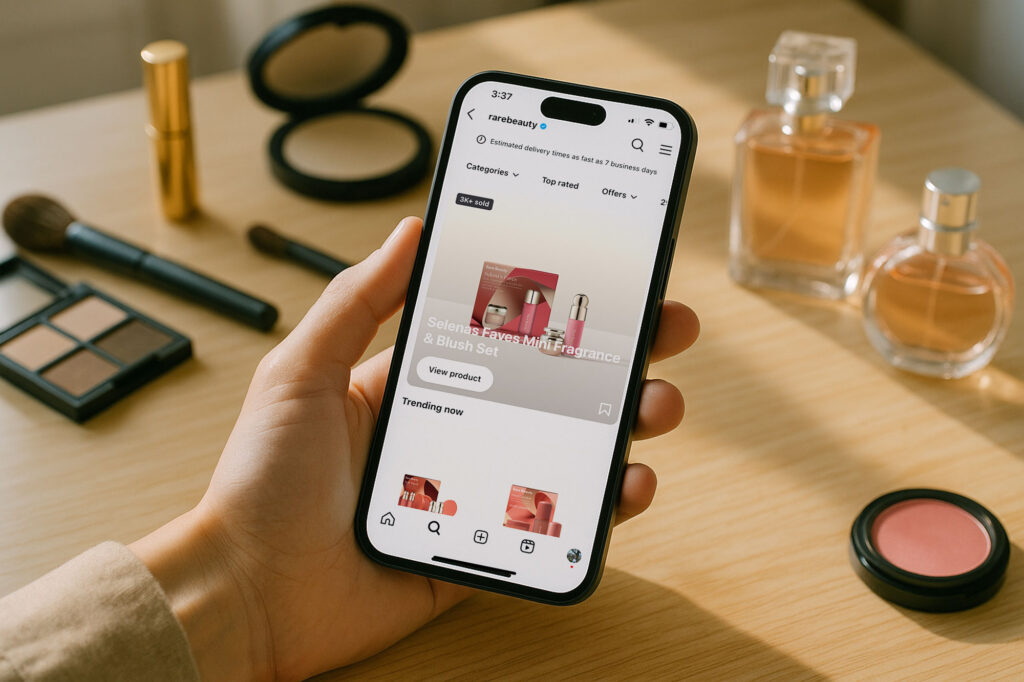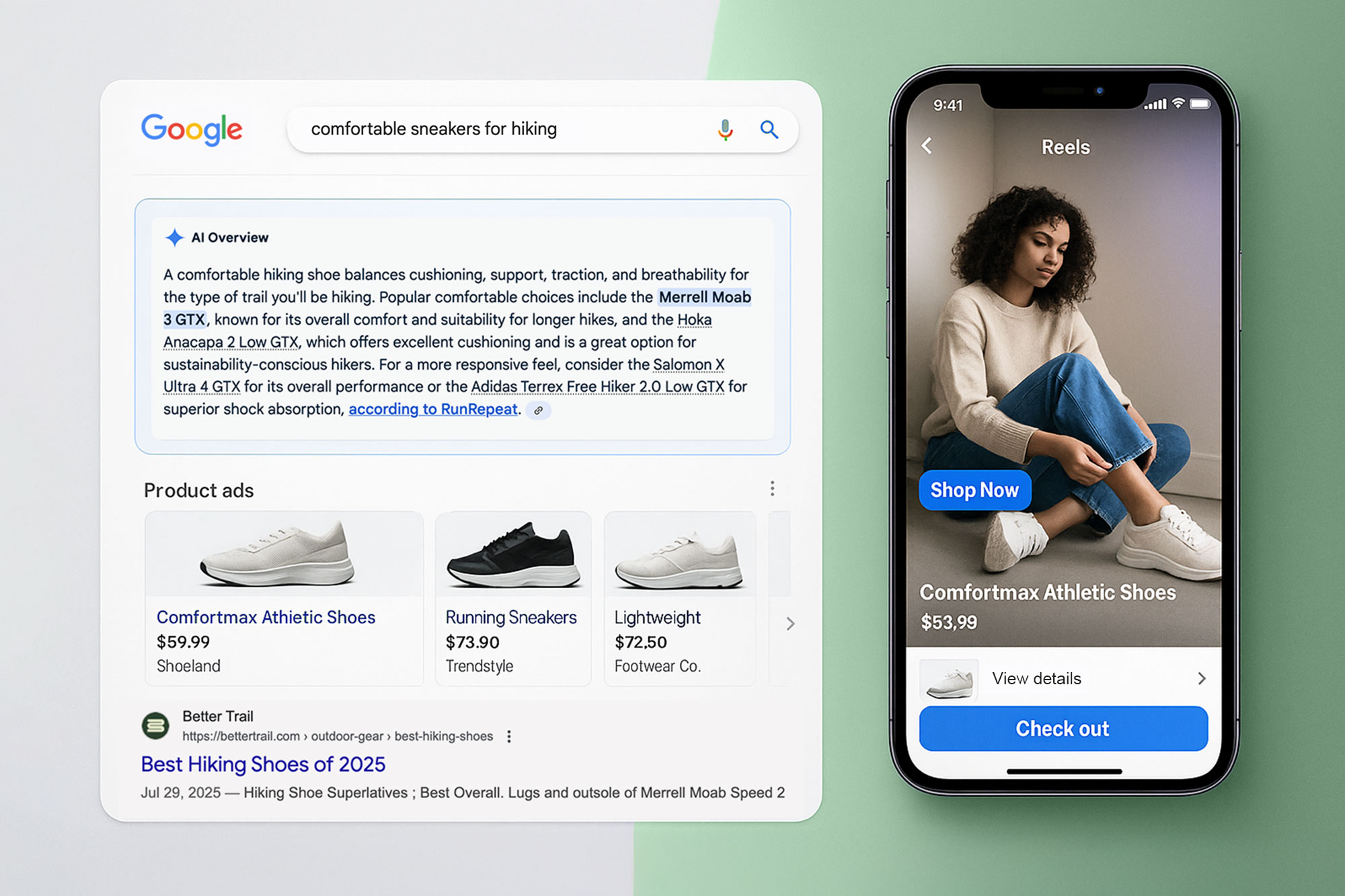Google’s new AI Overviews are already compressing the clickstream: when AI summaries appear, outbound clicks drop to roughly 8% from the historic 15% range. This is a profound shift toward zero-click behavior, where consumers get answers without leaving the search page. At the same time, social platforms have become de facto search engines. TikTok’s use as a primary news and search source among Gen Z has surged more than fivefold since 2020, and social commerce in the U.S. is on track to surpass $100 billion by 2026. Retail media networks like Amazon and Instacart are capturing product searches and ad spend once reserved for Google’s search ecosystem. The result is that discovery and conversion are now happening inside walled gardens that keep the consumer journey on-platform.
Implications for Google and Meta

For Google, the business model is evolving from routing traffic to providing in-line answers and on-SERP conversions. Expect a growing share of ad revenue to be tied to AI summaries, product listings, and merchant units rather than traditional organic clicks. Meta, meanwhile, is doubling down on a closed-loop commerce flywheel. Its Advantage+ automation, Shops, and Reels integrate discovery, creative, and checkout into one seamless experience—brands never need to bring consumers to an external site. Both companies are restructuring the economics of brand and product engagement by capturing more of the value chain inside their own surfaces.
What This Means for Brands

Brands can no longer rely solely on owned websites and long-form SEO to win attention. Content must be machine-readable and ready to be quoted verbatim in AI answers, with clean product feeds and structured data. Social channels must be treated as search engines, optimized with keyword-rich titles, transcripts, and chapters. Conversion needs to happen where discovery occurs—inside Meta Shops, TikTok Shop, and retail marketplaces—supported by retail media campaigns that bring product availability, pricing, and reviews to the forefront. Measurement must also evolve. With fewer site visits to track, marketers need incrementality testing, media-mix modeling, and clean-room integrations to prove ROI.
Near-Term Priorities
In the next 12 months, forward-thinking marketers will build an “answer library” of structured Q&As, deploy retail media as a core always-on channel, and implement TikTok and YouTube search taxonomies. They will need to lean into AI-powered buying tools like Meta Advantage+ and Google Performance Max, and reset performance metrics from last-click attribution to multi-touch incrementality. Creative pipelines will need to scale through AI-assisted production and creator partnerships to feed the constant demand for short-form and shoppable content.
Long-Term Mandate
Over the next two to three years, brands should establish a living knowledge graph of product attributes and customer insights that large language models can trust and cite. On-platform commerce architecture must be treated as a first-class destination, not an auxiliary channel. Privacy-safe first-party data and clean-room collaborations will become essential as cookies disappear and platforms tighten data controls. The winners will be those who design for discovery inside the answer itself and treat social, retail, and AI interfaces as the new brand home.
Future-Proof Discovery
As AI and social platforms rewire the consumer discovery journey, the traditional website-centric funnel gives way to an ecosystem where answers, inspiration, and purchase decisions increasingly happen without a click. Brands that thrive will treat every platform surface—AI overviews, shoppable videos, retail media, creator content—as a first-class storefront and a living knowledge source. The imperative is to design content and commerce that are machine-readable, instantly shoppable, and constantly refreshed with first-party data and clean signals.
Marketers who embrace AI-driven creative pipelines, platform-native commerce, and modern measurement will future-proof their relevance. The next era of growth belongs to brands that don’t just follow consumers to new channels but meet them inside the answer itself, turning discovery into conversion at the very moment curiosity sparks.








